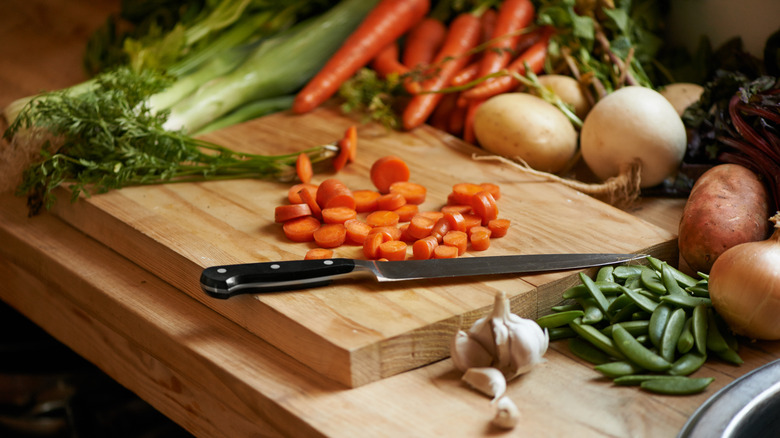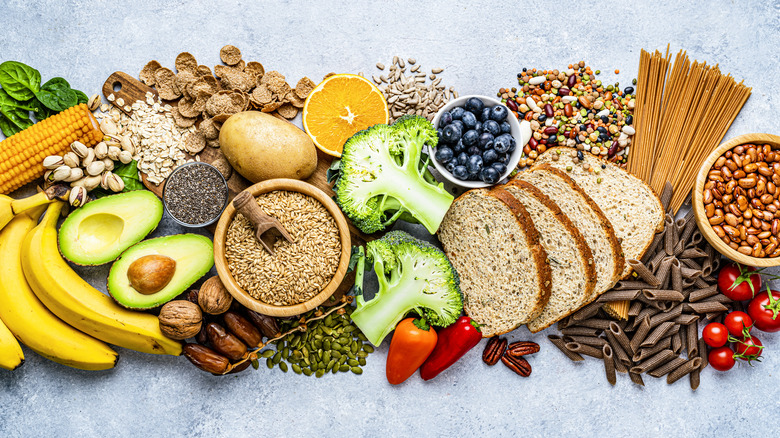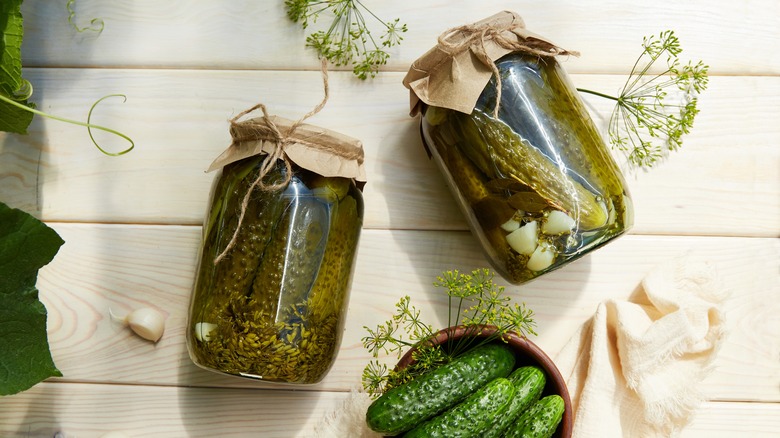You Should Cross-Utilize Ingredients, But What Does That Mean?
Whether you're cooking for a restaurant, a family, or just yourself, using the ingredients you have to your advantage can be a challenge. You might find yourself throwing out at least a few foods per week because you simply don't know how use them (or maybe you're tired of serving them the same way over and over). One of the most effective ways to crush this habit is to cross-utilize your ingredients: In other words, use the ingredients you have across multiple dishes.
This is a term that arose out of restaurants and professional kitchens, to help prevent food waste and save money. Considering that American households waste an average of 6.2 cups of food per week (which can add up to 360 takeout containers' worth of food in a year), and a single household could also save at least $1,500 per year by eliminating food waste, cross-utilization is undoubtedly worth learning.
By planning out your shopping and stretching your ingredients across different dishes, you not only keep your meals exciting, but also keep your pantry, fridge, and freezer space more organized. You'll be less likely to forget about or disregard certain ingredients, so you don't end up with a bag of spring greens constantly rotting in the bottom of a crisper drawer. You won't be cleaning up messes from spoiled food nearly as often, either.
How to shop for and cross-utilize ingredients
When cross-utilizing ingredients, it's easiest to start with the basics. Simple and versatile items like vegetables, rice, or chicken can be mixed and matched into different recipes more easily than ingredients you have less experience using. These ingredients are often sold in bulk for cheaper prices, too. A cheap bag of spinach can be used in paneer cooked with spinach, a quiche, or a quesadilla. The cheddar cheese used in that quesadilla can then be used to top a bowl of chili, whip up a pot of mac and cheese, or add some extra flavor to eggs and hash browns.
Before you start shopping, look for recipes you'd like to try that have overlapping ingredients, but different flavor profiles. Seasonings can be crucial to success — different flavors prevent you from feeling like you're eating the same thing over and over. For example, pork, cilantro, limes, and jalapeños could be used to make tacos with cumin and chile powder. You can then get more creative and use them in Thai larb, a chopped meat salad with fish sauce and mint. You'll have totally different dishes with the same basic ingredients, so need to rush back to the store constantly.
You should also keep notes of how much of each ingredient you buy, and how much is left over after each use. Monitor expiration dates and shelf lives, too. This can help you use multiple soon-to-spoil components in one dish.
How to repurpose every part of your food
The next step in cross-utilization is to deal with ancillary food items around your kitchen. These are things like condiments, garnishes, and flavorings that you may buy on their own, or might be a byproduct of another ingredient. If you bought pickles to make roast beef sandwiches, use the leftover brine to add a tangy hit to salad dressings and sauces. If you're making a simple dish of tinned fish on toast, save the oil they're packed in and add it to a pasta dish with capers and olives. You can even cook up a bunch of bacon for your weekend breakfast, then save the fat and use it to cook vegetables, fry eggs, and even bake cookies (just make sure to help the bacon grease last as long as possible).
All of this being said, you might still find yourself with food items you don't know how to use up. In this case, consider alternate ways of preserving them. Freezing is a great technique for blanched vegetables, raw meat, leftover baked goods, and things like udon noodles or rice cakes. Fruits, veggies, egg shells, and coffee grounds can all be composted. And you might even find non-culinary uses for these extra ingredients: Onions slightly past their prime can be used to clean grill grates, rice water can be used as a mirror-cleaning spray, and juiced lemons can help get out nasty laundry stains.



